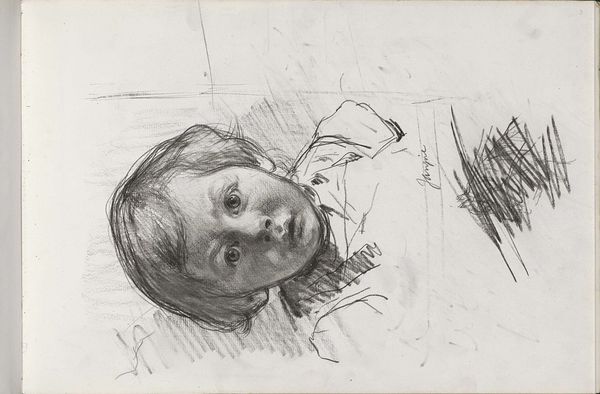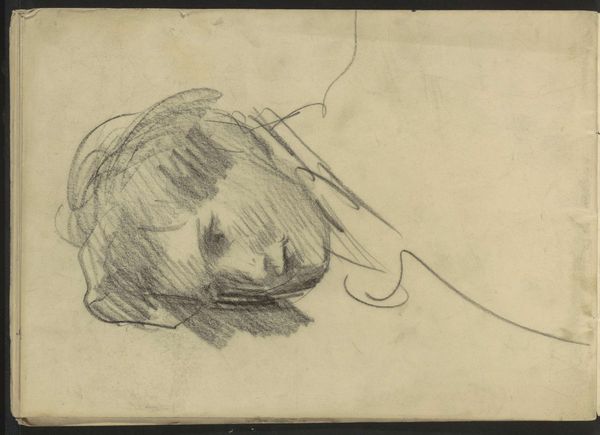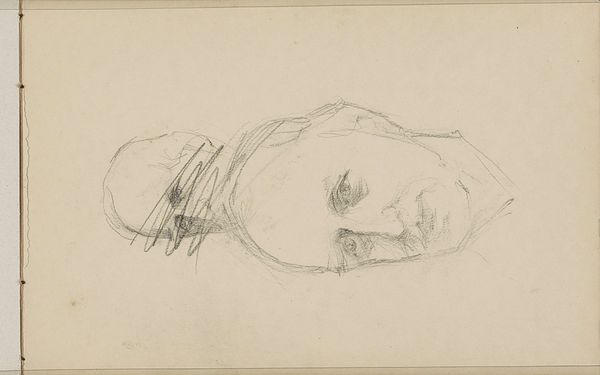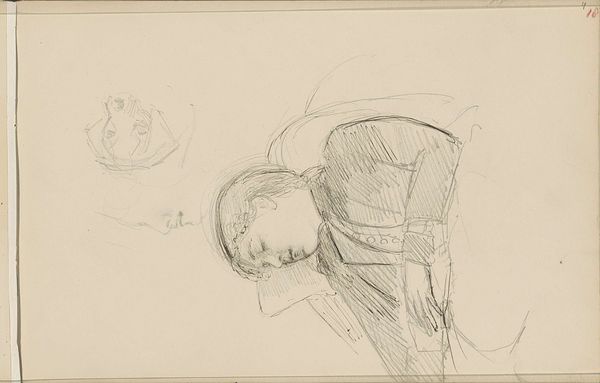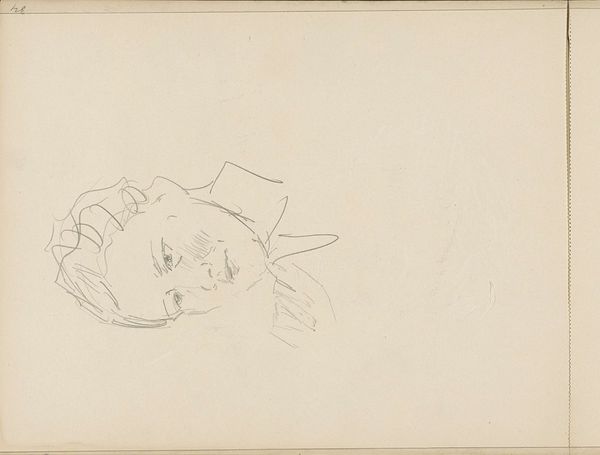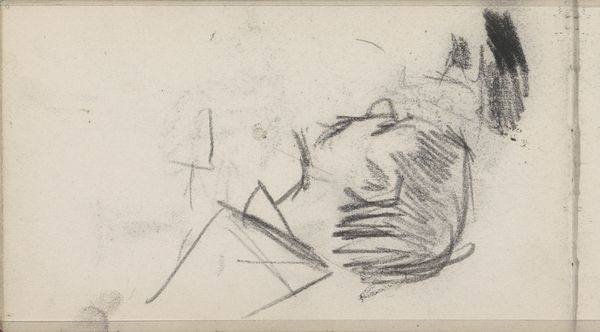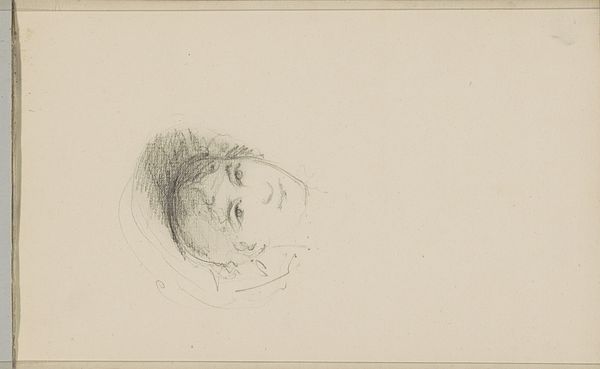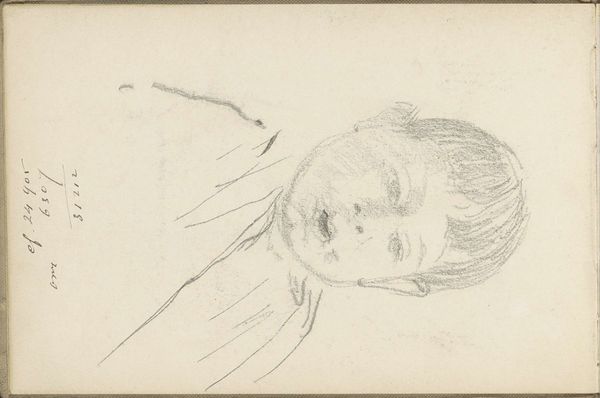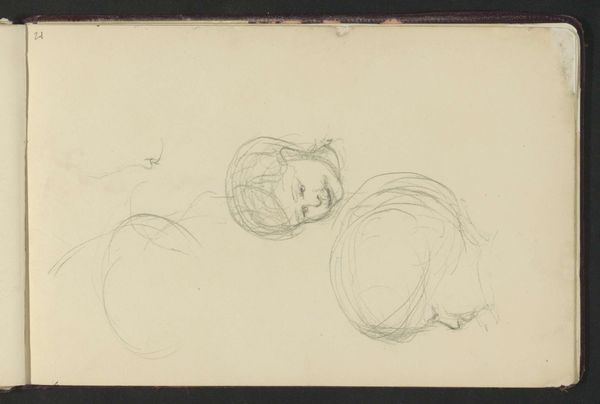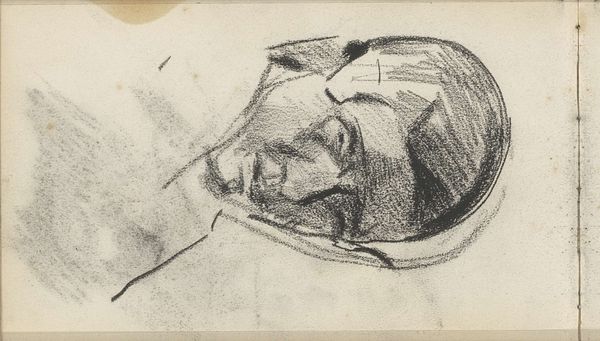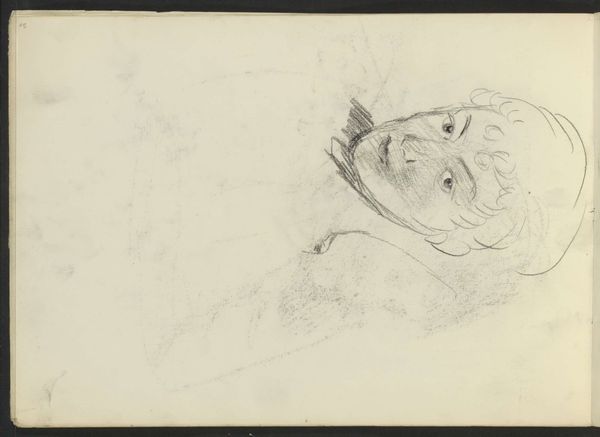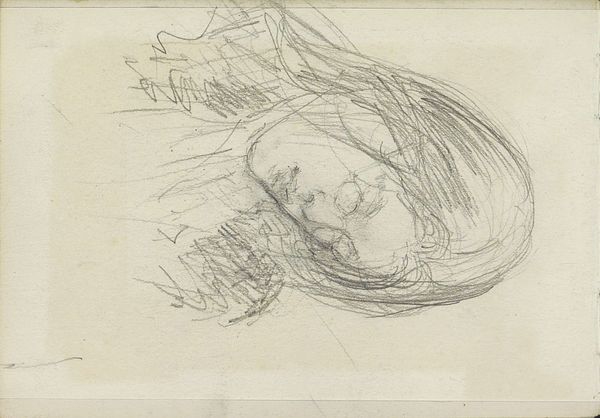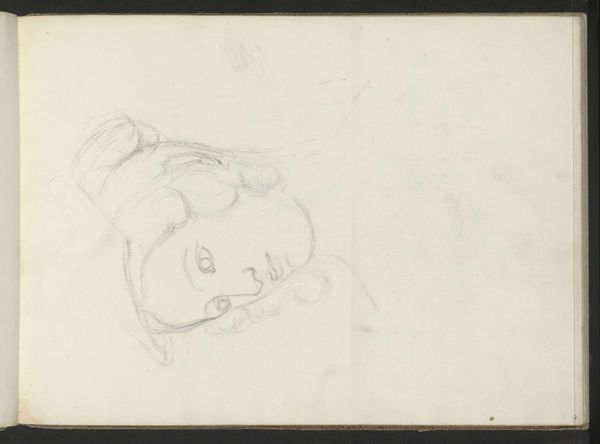
Portret van Johannes René (Jampie) van Vloten als kind c. 1887 - 1892
0:00
0:00
drawing, pencil
#
portrait
#
pencil drawn
#
drawing
#
impressionism
#
pencil sketch
#
child
#
pencil
#
pencil work
Copyright: Rijks Museum: Open Domain
Editor: So this is Willem Witsen's "Portret van Johannes René (Jampie) van Vloten als kind," a pencil drawing made sometime between 1887 and 1892. The softness of the pencil really captures the peacefulness of a sleeping child. What stands out to you about this work? Curator: The most compelling aspect to me is Witsen's deliberate choice of the humble pencil. This wasn’t some grand commission demanding oil paints and precious pigments. Here, labor and accessible materials intersect. He elevated the everyday, suggesting the process of creation, the almost casual act of capturing this child’s image. We need to consider, whose labor was deemed valuable and why at the time? What does using a ‘lesser’ medium do in representing a child? Editor: That's a great point! It really does feel more intimate because of the pencil. So, the ease of accessing the material shapes the portrayal... Do you think that says something about the social standing of the subject as well? Curator: Precisely! Consider the sitter's family; perhaps they belonged to the emerging middle class, and this simple portrait reflects a shift in values – a celebration of childhood through everyday means. The marks on the page show the labor. Compare that to earlier traditions, where portraits were commissions to display familial wealth and legacy. Editor: It's amazing how a simple pencil sketch can reveal so much about the changing societal values and the artist’s choices in production. It highlights how class is marked through media. Curator: Indeed! It challenges us to reconsider the role of art in everyday life, where inexpensive materials and immediate creation allowed the capturing of moments of simple affection. Think about how different this is from academic oil paintings of the time, both in production and accessibility. Editor: Looking at it this way, I can better appreciate how the materiality informs its emotional impact and social meaning. Thanks for sharing that insightful view! Curator: My pleasure! Considering material conditions reshapes our view of art history; it’s an endless field for interpretation!
Comments
No comments
Be the first to comment and join the conversation on the ultimate creative platform.

